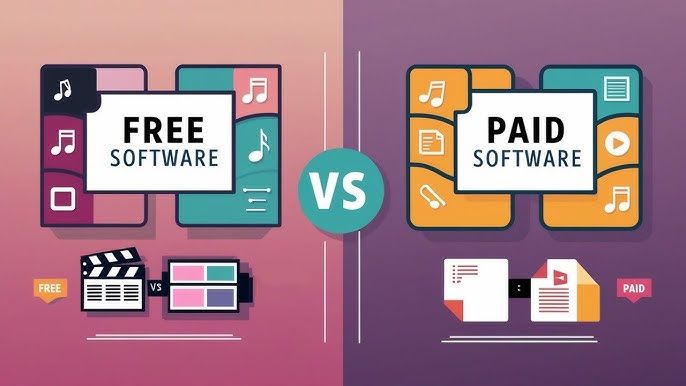Choosing between free and paid software can be a daunting task for many individuals and businesses. In the tech world, there is a wide range of software options available, each with its own set of features and pricing. This article will explore the benefits and drawbacks of both free and paid software to help you make an informed decision.
Cost:
One of the most obvious differences between free and paid software is the cost. Free software is, as the name suggests, completely free to use. This can be appealing for individuals or small businesses with limited budgets. On the other hand, paid software usually comes with a price tag, which can vary depending on the features and services included. While paid software may require an upfront investment, it can offer additional functionality, customer support, and regular updates that may not be available with free alternatives.
Features:
When it comes to features, paid software typically offers more advanced capabilities compared to free options. Paid software often includes premium features, such as advanced security measures, customer service support, and the ability to customize and integrate with other software applications. Free software, while functional, may have limitations in terms of features and scalability. Depending on your needs, you may find that paid software offers the features and flexibility you require to effectively run your business.
Reliability and Support:
Another key consideration when choosing between free and paid software is the level of reliability and support provided. Paid software vendors typically offer dedicated customer support, regular updates, and bug fixes to ensure that their products run smoothly. In contrast, free software may lack the same level of support and updates, which can be a risk for businesses relying on these tools for critical operations. If you value reliability and timely support, paid software may be the better choice for your needs.
Security:
Security is a critical factor to consider when selecting software for your business. Paid software often includes robust security measures to protect your data and systems from cyber threats. Paid vendors invest in security measures, such as encryption, firewalls, and regular security updates, to keep your information safe. While free software may offer basic security features, it may not provide the same level of protection as paid alternatives. If data security is a top priority for your business, investing in paid software may be worth the cost.
Updates and Maintenance:
Regular updates and maintenance are essential for keeping your software running smoothly and securely. Paid software vendors typically provide regular updates and patches to fix bugs and add new features. This can help ensure that your software remains up-to-date and compatible with the latest technology trends. Free software, on the other hand, may not receive the same level of updates and maintenance, which can lead to potential issues down the line. If you value ongoing support and updates, paid software may be the better choice for your business.
Conclusion:
Choosing between free and paid software ultimately comes down to your specific needs and budget. While free software can be a cost-effective option for individuals and small businesses, paid software offers advanced features, reliability, security, and support that may be essential for larger organizations. Before making a decision, consider the cost, features, reliability, security, and ongoing support provided by each software option to determine the best fit for your business.




